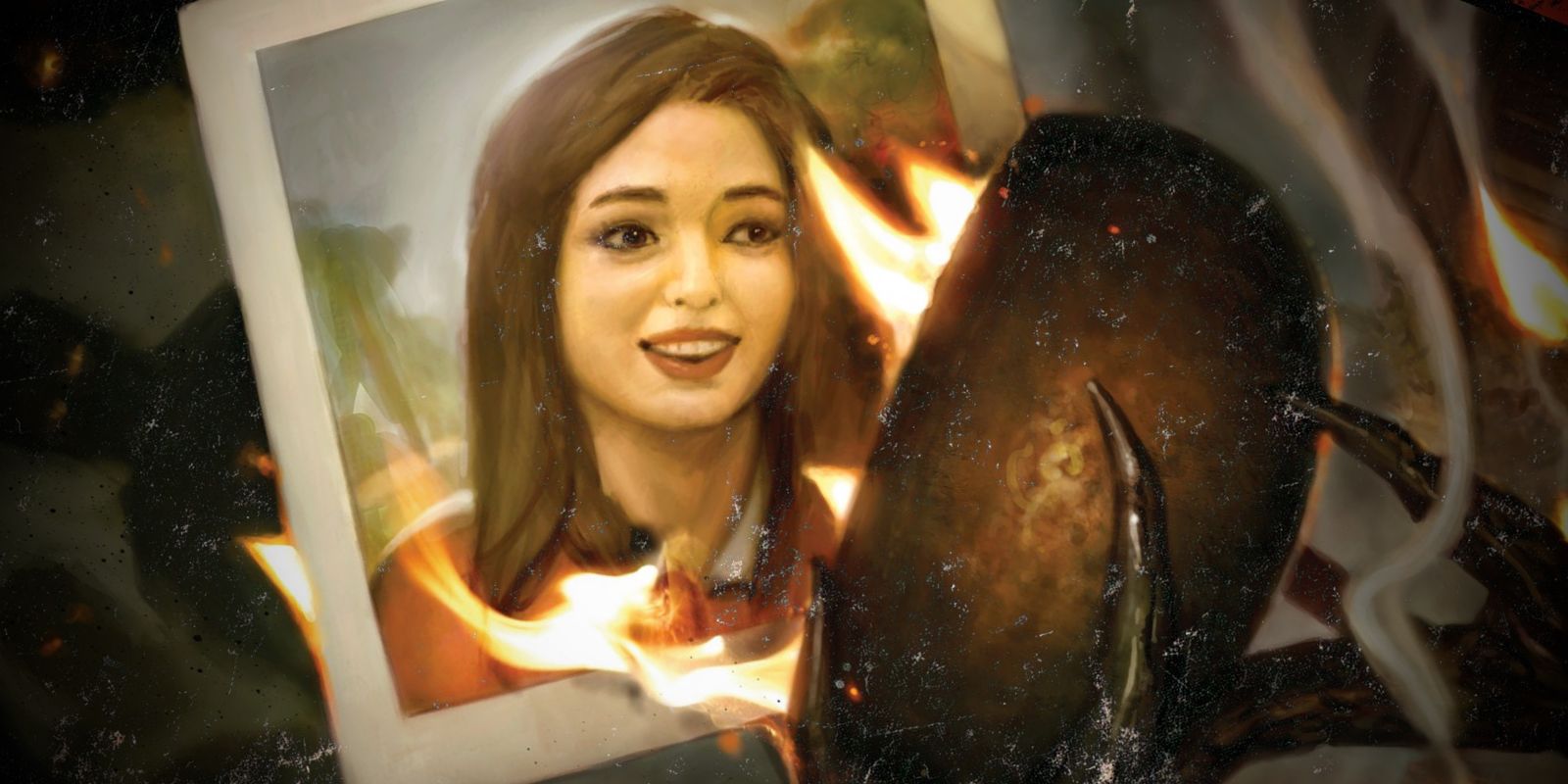
Horror fans counting the hours until the arrival of the upcoming The Conjuring: The Devil Made Me Do It have yet another dose of the franchise to enjoy, now that The Conjuring: The Lover is bringing a new five issue comic miniseries from DC Horror.
The new DC imprint makes its intentions known in name alone, with the publisher also choosing one of the most well-known horror franchises for its latest comic book expansion. The tale, co-written by screenwriter David Leslie Johnson-McGoldrick (The Conjuring 2, The Conjuring: The Devil Made Me Do It) and Rex Ogle, follows the film's Jessica Louise Strong (played by Ingrid Bisu) and the earliest days of her demonic haunting in college. Screen Rant was one of a handful of outlets invited to hear from the creative team behind the project, and learn how Johnson-McGoldrick, Ogle, and editor Katie Kubert crafted the newest installment expanding on the latest film... while opening the door to even more comic book explorations of the Warrens' collection of Conjuring universe artifacts.
Readers can enjoy the full interview below, along with preview pages from The Conjuring: The Lover #1 by artist Garry Brown and colorist Mike Spicer and cover art by Brown, Bill Sienkiewicz, and Ryan Browne.
Screen Rant: Part of horror movies, and The Conjuring specifically, is that slow burn and ominous build up to the horror? I wouldn't expect the comic to keep up that formula, but Issue #1 certainly does. Was that always the plan?
David Johnson-McGoldrick: From my point of view, for sure. It was definitely part of the plan, in that I felt like if we were doing to do The Conjuring as a comic book, it should as much as possible evoke the same feeling of going to the theater and dealing with some of the same tropes. We bring as much as the film DNA as possible into the comic.
I'm also just a big fan of horror comics in general, but also inspired by Japanese horror comics by Junji Ito, who is really a master of the slow build and evoking tension through the size of his panels and the big splash page reveals. So, this seems like a really fun opportunity to do something like that.
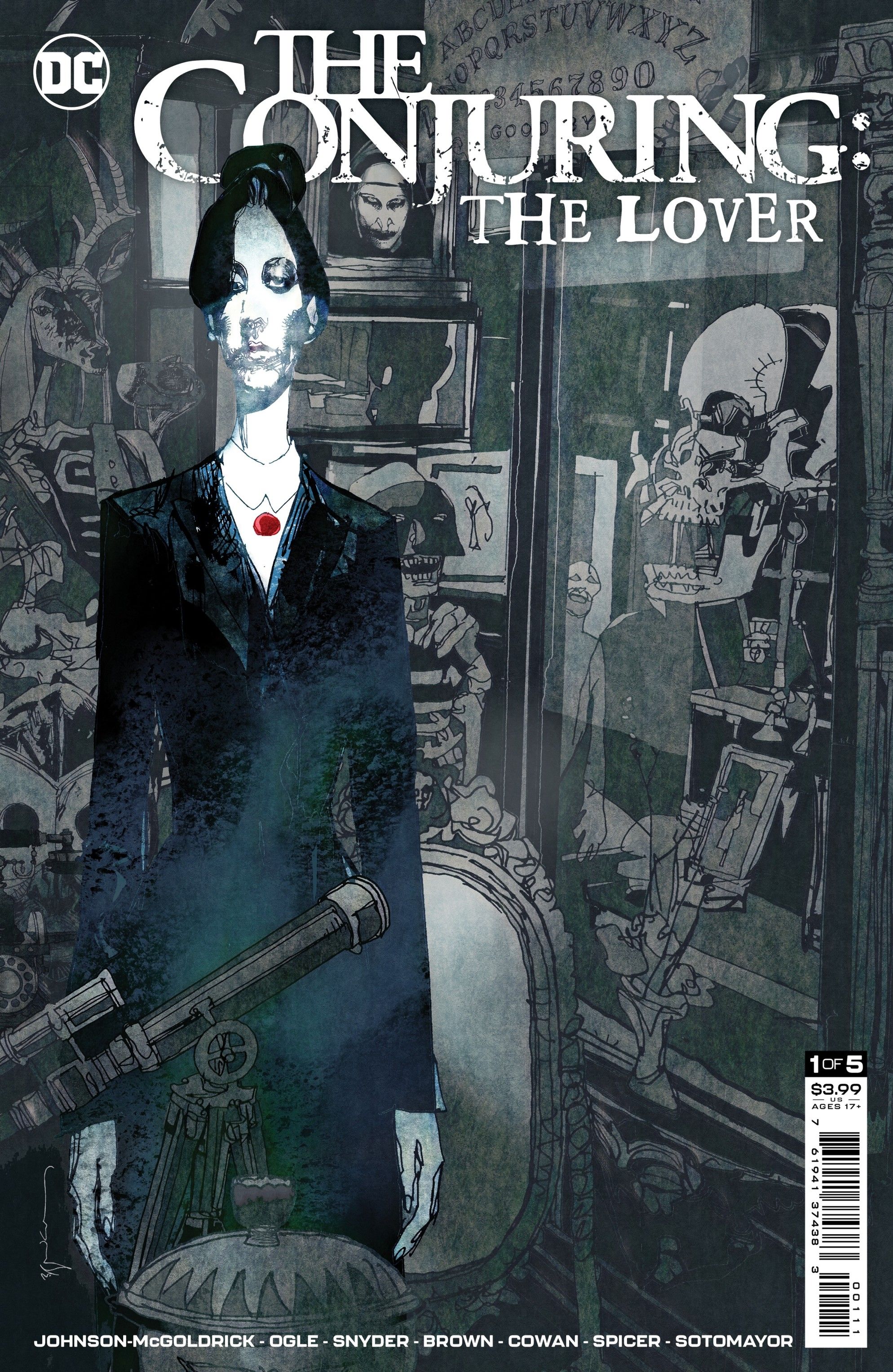
Rex Ogle: Yeah, I couldn't agree more. There's a kind of beauty to having a slow build up over two pages, and then that page turning and getting like a little freaked out. Like David said, like, we wanted it to be as much like The Conjuring movies as possible.
Katie Kubert: To add a little bit to that, as any good horror fan knows, there's a whole bunch of different types of horror content in movies. You've got ones that are super gory, or you've got ones that are more creepy - there's a litany of different types of horror content that you can provide.
So, when I was talking to David and Rex about what kind of comic we create here, we wanted something that feels both authentic and genuine to The Conjuring universe that's been built. But also something that, as comics love to say, give fans what they're expecting but not how they expect it. That's kind of what we're hoping to do here.
With The Conjuring being the most successful horror cinematic universe this side of the Universal monsters, what colors did you want to add to this particular canvas?
David Johnson-McGoldrick: To me, the opportunity of the comic is similar to the opportunity provided in the cinematic universe idea. We're able to go down avenues that we couldn't explore in the flagship series of the franchise. If it was just Conjuring 1, 2 and 3, there are all these unexplored avenues that we wouldn't know about.
The comic felt like a really good chance to meet a character who we weren't going to get to spend a lot of time with otherwise. This was very much an opportunity to expound on something that felt possibly underserved, or fill in these gaps that were there in the film. Without the comics, we wouldn't have the chance to do that; we can get into some of these smaller characters and tell more personal stories that way.
Rex Ogle: And it's great, because we get to expand the universe in a way. As a fan of The Conjuring movies, it's great to actually be able to build something that is part of but apart from at the same time. It's really fun to get to build on characters that you're going to see in the movies.
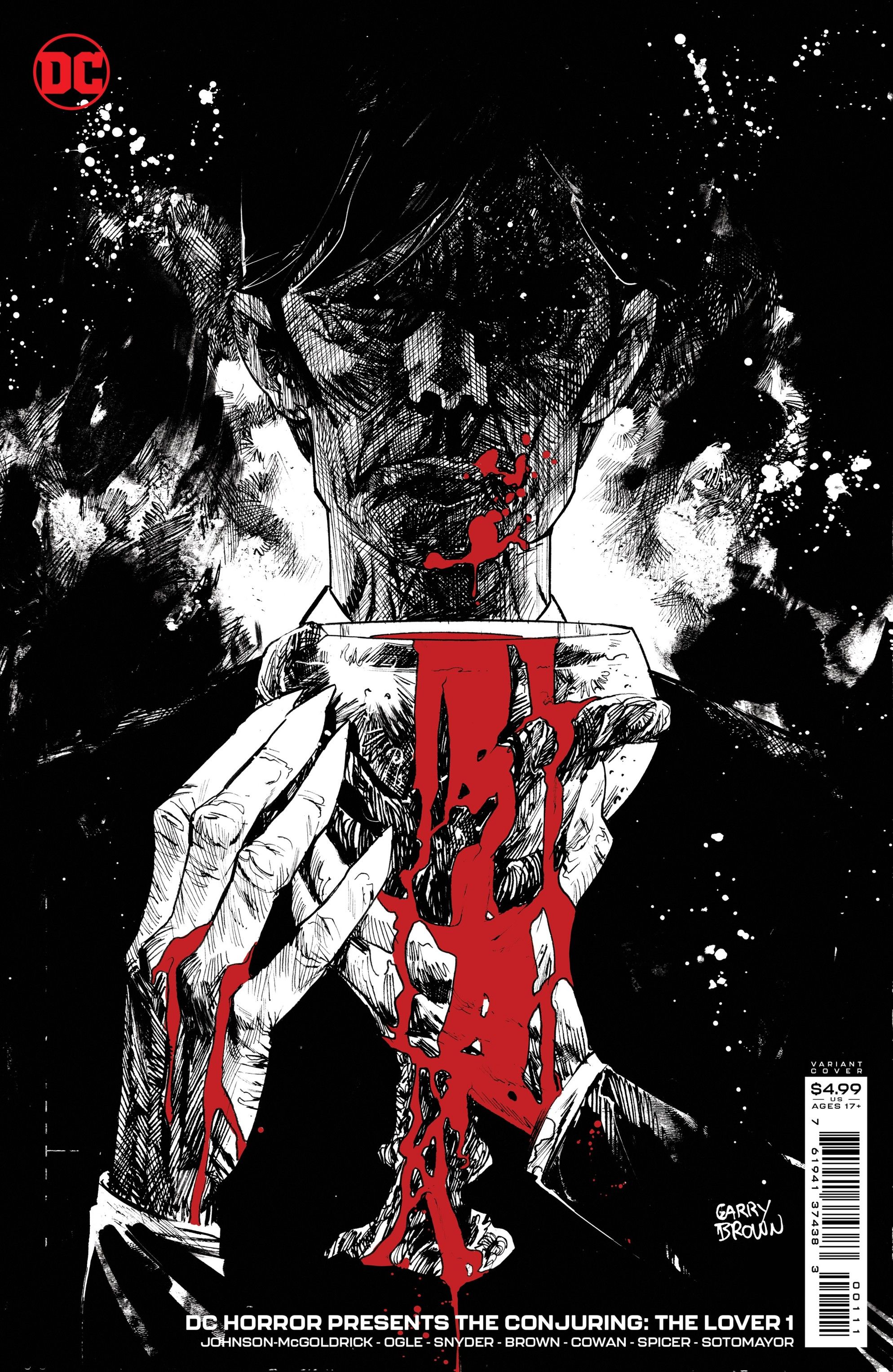
On a similar note, what stands out to you all as "Conjuring" horror?
David Johnson-McGoldrick: Coming to it as a fan, because I was not involved in the first Conjuring, the reason I was excited to come on to the second one was that it's very much character-driven horror. Certainly, the thing that makes the mothership franchise different from other horror - and I guess what we would call Conjuring horror - is those movies have happy endings. The heroes win, and that almost never happens in a horror movie. There's always usually the idea that there's something else out there that's going to get you. But in Conjuring movies, Ed and Lorraine prevail; they make you feel good. That's a big part of it.
And then just the character aspect of it, which we're able to explore in the comic. It's this idea that sometimes the horror is the manifestation of some other problems in their lives. We talk about people having demons, but in The Conjuring universe, those demons manifest themselves and become real. The horror has its basis in character, I think.
Katie Kubert: David and Rex both keep using this phrase, The Conjuring universe. And that's one of the things that I love about the films themselves: it's not just The Conjuring it's the connective tissue that's threaded through all the other movies that everybody knows with his universe.
When we were creating this comic, that's what we wanted it to feel like. So, we dropped a lot of clues in there; there's a lot of mysteries. There's things that are answered in the first issue; there's things you have to read the entire series to figure out. That's something we wanted to do to keep in line with the way The Conjuring universe has been built so far: little Easter eggs, little hidden things that maybe you didn't see the first time you read it, so you have to go back and read it again. It's exactly the same with the way The Conjuring movies have built themselves; there's clues hidden, and you didn't see this hand creeping out from nowhere.
We tried to keep it feeling as authentic to a Conjuring movie that a Conjuring fan would come to expect, but then expanding on the stories and expanding on the universe. And just giving them some new little creepy things - and we keep using that word creepy, because that's exactly the way that Th Conjuring movies fit in, as opposed to something more gory. This is not your gore fest that you would expect from some other genres; this is something that is going to leave you with that feeling of dread and impending doom, which Conjuring is perfect to doing.
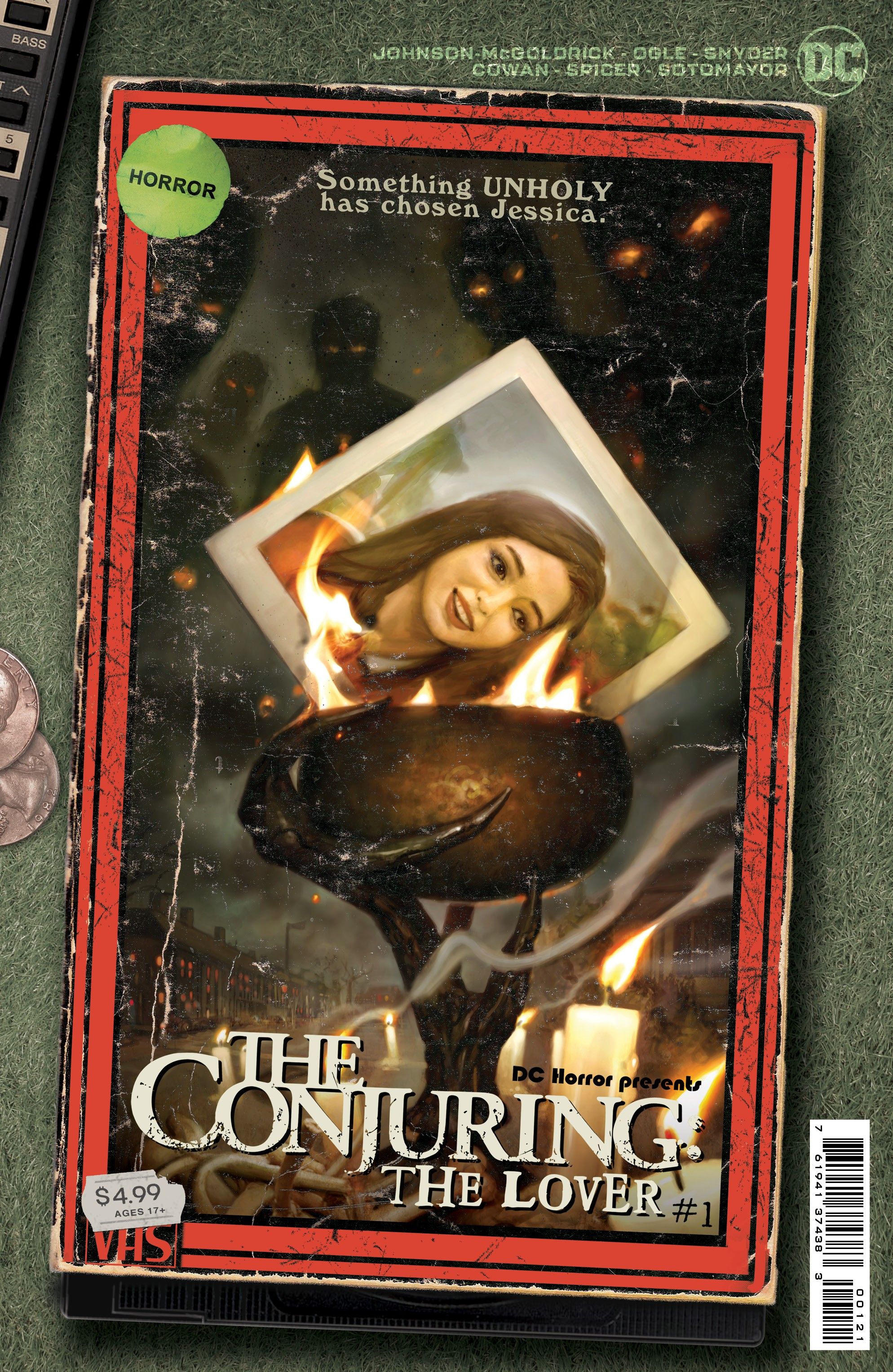
What made Gary Brown the perfect artist for the series?
Katie Kubert: I know all three of us were talking about artists that would really just bring the story to life and give that overall sense of dread that we were really searching for. I wanted an artist that, first and foremost, could tell a story and have really strong storytelling skills. Because you're juggling a lot of balls, with not only making sure that you get the story across but also making sure you're building that sense of dread and hiding the things that we want to hide, and you're making sure that it feels authentic to the horror genre.
Gary and I have worked together for years. He did some work for Nightwing for me, and I've read some of his other horror series before; he's done an amazing job with those. So, Gary was one of the first people in my head. I was like, "If he is free and available, he would just be the perfect fit for the story that Rex and David were crafting, and he'd really get that tone that we're aiming for across." I think I pitched him to you guys, and David and Rex were like, "Yeah, let's do it," so I was like, "Oh, thank God. They agree with me." So, that was good.
Rex Ogle: The thing about Gary Brown is that he does his pencils and inks, and he brings a certain element of both emotion and darkness. I think that's kind of the perfect balance that we're going for with The Conjuring.
David Johnson-McGoldrick: I was just going to comment too on the pencils and inks. I love his use of shadow and blackness, and how he uses that to show the encroaching doom. We've got a lot of great panels of this encroaching blackness coming over things, or hands coming out of just nothing but blackness, and I love that about his work.
We're set in the 80s, and it has a slightly retro feel to it that I really dug.
Issue #1 has a definite EC comic feel, with the fun ads and the main and backup stories. Can you talk about any influences for the comic structure, and how this format allows you to draw on the entire Conjuring universe? And Katie, I'm wondering if you can maybe take a deeper dive into the idea of including the artifact room stories as a part of this overall series.
Katie Kubert: Yeah, those ads were something out of David and Rex's brain, and I fell in love with him because I was like, "That is such a cool idea." Structuring this particular series was a challenge, but in a super fun way, because I was like, "I want to fit everything in there!"
David Johnson-McGoldrick: When Katie first brought up the idea of doing The Conjuring comic, the first thing that we had to decide on was: what does that mean? What is a Conjuring comic book? And for me, as soon as she said, "We're going to do DC horror again," I immediately was flashing back to House of Secrets, House of mysteries - as you say, the EC. I grew up with the Gold Key Twilight Zone comics, and there was always those hold horror comics - coincidentally from the period that we're talking about in the film, the 1980s.
But there was an almost illicit quality to those horror comics back then, especially the EC ones. They were having hearings in Congress about EC and what that was those were doing to our kids. For me growing up with horror comics, that was part of what was fun about it. I really want to work with these guys to figure out a way to capture the nostalgia, but also the "you never know what you're going to get" aspect of those old horror comics. Who's going to be writing this one? What stories are going to be in it? You don't know, it's a grab bag. And I feel like we've managed to capture that somewhat.
Rex Ogle: Yeah, I grew up watching Tales From the Crypt. And when I found out that it was based on a comic book, it blew my mind. I immediately ran out to a thrift bookstore that was selling old comics, and I would dig through to find the old Tales From the Crypt comics. And I would just get so excited, because I couldn't get enough horror as a kid. And you get these great ads that had, like, the bully kicking sand in the nerd's face and him turning around and getting the Atlas body.
I grew up with those ads, so it's really fun to be able to play with those now and give them some levity. Because the story that we're crafting with The Conjuring: The Lover is pretty dark, so I think it's good to give the readers just a little bit of fun in there.
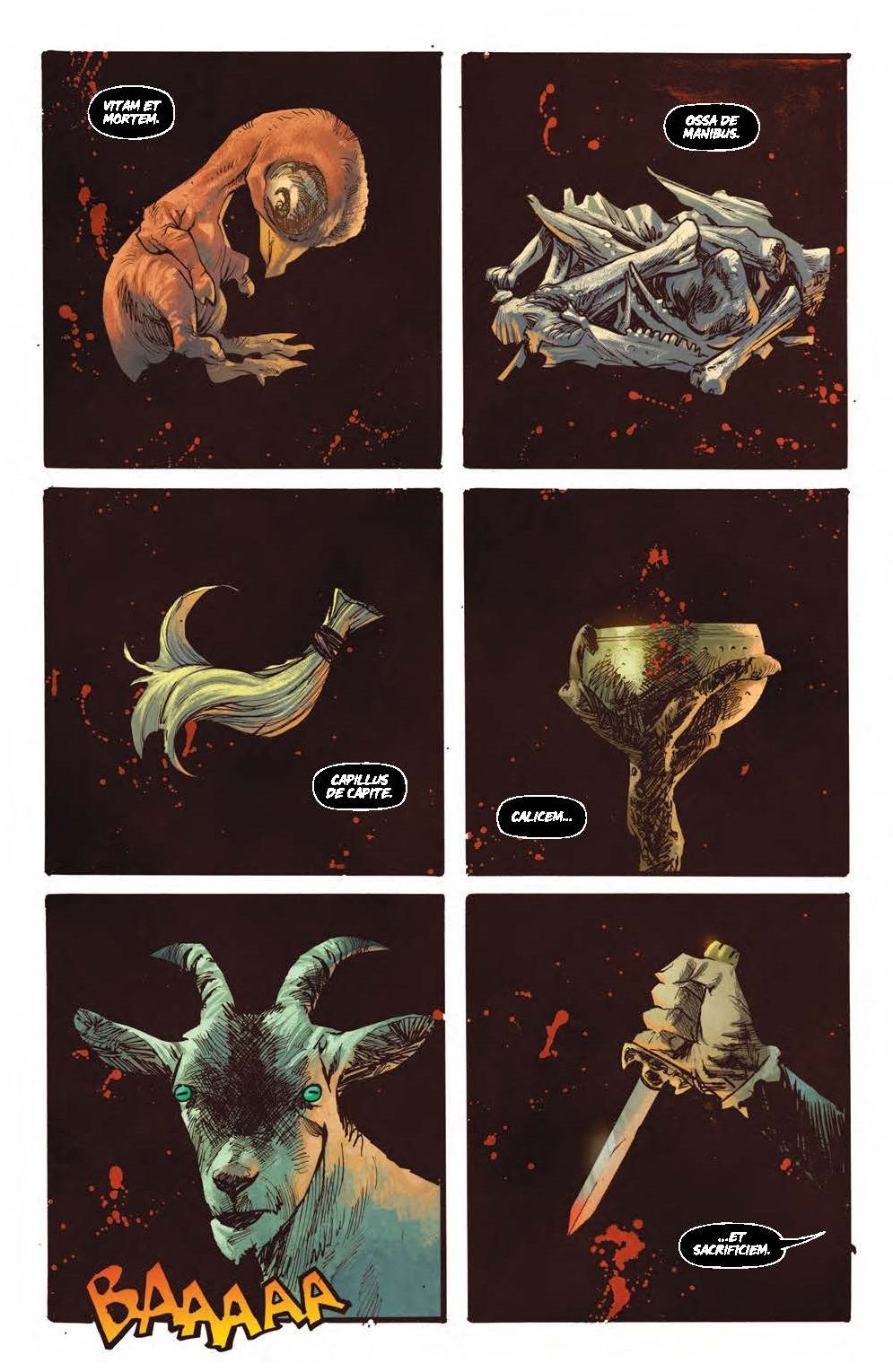
Katie Kubert: Totally, totally agree. And it's funny, Conjuring: The Lover's title is very specific to the story that Rex and David built. However, it's also an ironic title, because this series is such a love letter to the horror genre. And you can see that not only with the ads that we're building, but with the backup stories and the artifact room. But also with like the variant covers; we have Ryan Brown doing these variant covers, and we have them designed to look like old VHS horror covers. It's something close to my heart: I would go into the horror section as a kid in the video store, just look at all these really disturbing horror movie covers and just fall in love with them.
It just fit perfectly with the timeline of this comic, which takes place in the 80s just like the film that's coming out will. So, we basically wanted to use the opportunity to create that love letter to the horror genre.
In terms of the artifact room, when you look at The Conjuring universe, some of the most interesting stuff about the Warrens themselves are things that they've done before. Can we explore those? That artifact room from Annabelle 3, when you walk in, it is so foreboding. Every little thing can look completely innocent, and yet there's this terrifying story behind it.
We wanted to use the backup stories to give a little glimpse into things. Like in the first one, we talked about the Ferryman mask. Writer Scott Snyder and Denys Cowan were able to really make this Twilight Zone-y, Creep Show-y love letter essentially, and really bring a bit of that additional creepiness. And as we go through the series, you'll see we also touch on a few other horror genres with the other stories. Again, giving readers more of what they want and expect, just not always in the way they're expecting it.
In the first issue, there's a demonic creeper. But what really feels scary for Jessica is just being alone. Will that remain a core part of this?
David Johnson-McGoldrick: This is a pretty intimate story. It's very much centered around her and the idea that people have demons, and in The Conjuring universe those demons manifest in real ways. Part of her demon in this first series here is loneliness; her sense of isolation and her sense that she's never going to fit in, and that she has this secret side of herself that she has to keep from people. So, we're very much internal and keeping the horror coming from her own anxieties about the situation she's in. It's only then compounded by the fact that, on top of everything else, she's been cursed.
Rex Ogle: I drew a lot from personal experience, which I didn't expect to. When Katie approached me with this project, I was just excited to do something with The Conjuring universe. But as David and I got into the story, I found that I was really drawing from a lot of my experience.
I feel like a lot of people were having a great time just partying it up, making friends left and right. But I start having panic attacks in college, which was very uncomfortable, and I don't wish them on anyone. But as Jessica is experiencing this demon taunting her and in harassing her, it's very much like those negative voices that you get in your head. So, it's almost a personal story, and I really enjoyed getting to kind of go back to college. "Enjoy" maybe is the wrong word, because it's a little freaky revisiting that stuff. But it's definitely fun to see it on a page.
Katie Kubert: Yeah, one of the best things about horror is the universal experiences that everyone can connect with regardless of your background, regardless of your experience, regardless of who you are. Everyone can connect with the concept of loneliness, everyone can connect the concept of having a secret and having it eat you inside. It's almost this embodiment of whatever that dread or whatever that experience is for you.
Rex and David have done an amazing job creating almost this demon; this thing that's always on your shoulder, always behind you, always in the back of your head. It's something everybody can connect with, and I think they've done fabulously with that.
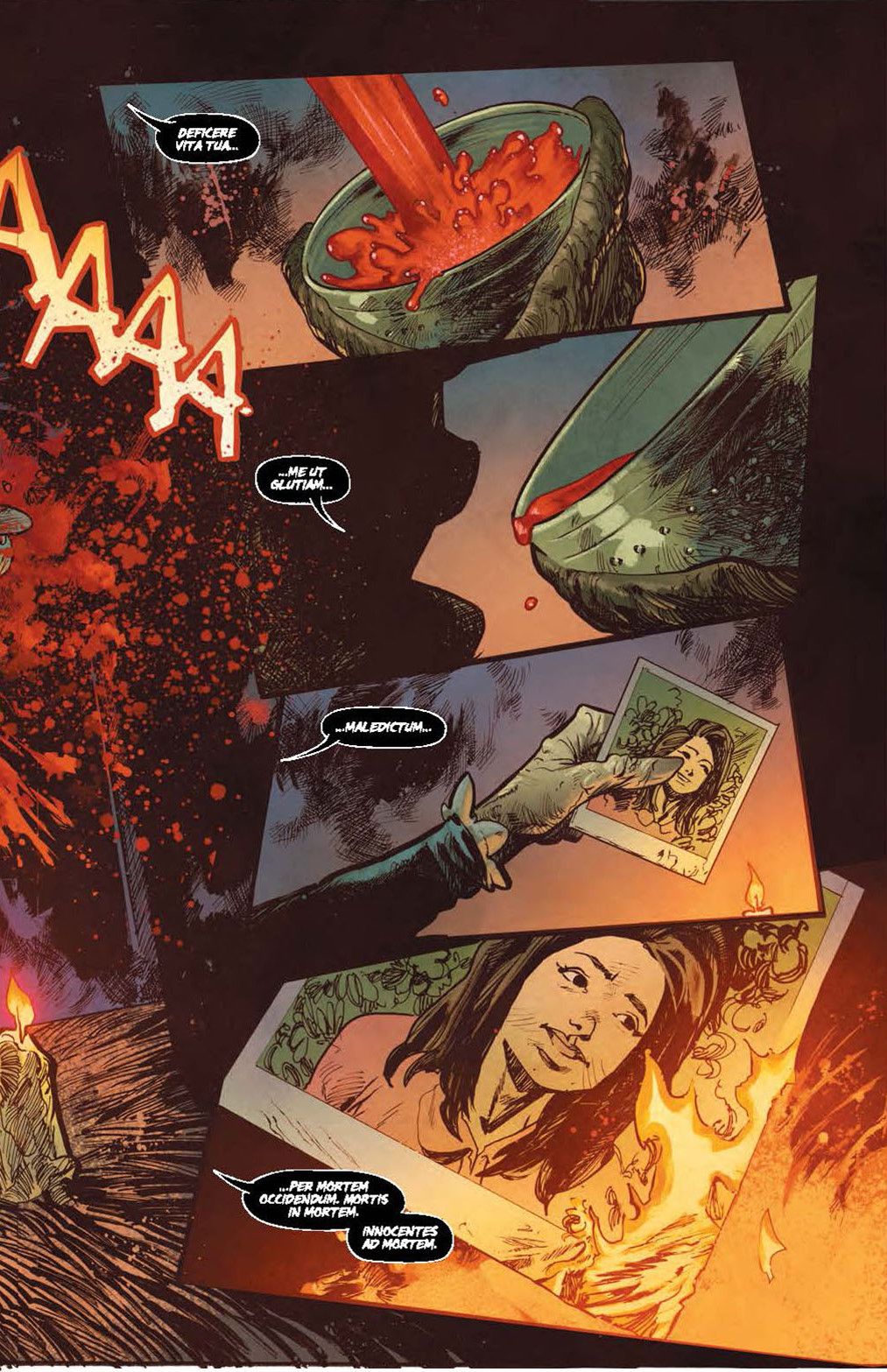
What were the discussions like in pacing out The Conjuring: The Lover, especially in trying to preserve surprises from The Devil Made Me Do It?
David Johnson-McGoldrick: It wound up being fairly simple. Before we ever knew that there was going to be a comic book, the movie had this untold story that the Warrens come in on the tail end of. Even after the tail end of it, because they're finding out everything that happened after the fact.
We were always like, "Gosh, I really wish we could spend more time with this character. I wish we could get to know her more." She's gonna turn up and she's gonna die, and then that's the end of it. What do we do with her? We wished we had the real estate in this film to tell her story. When we found out we were doing this, I immediately raised my hand to say, "I know. Let's tell the story of Jessica," because otherwise we were never going to get that chance.
So, it really was less about tiptoeing around the movie as avoiding spoilers, as it was the missing puzzle piece that this just slotted right into.
Rex Ogle: It was so fun, because I got to read The Conjuring 3 movie script. and I was just so excited to be ahead of the curve. I got to tell my niece and nephew, "I've already read this!"
I've also never co-written anything before, but David has been completely awesome because he helps me keep it in The Conjuring universe. It's really fun just getting to bounce ideas off him and Katie, because we end up making a stronger story. The story on its own is going to be so much fun, but to have three people navigating it and making it stronger, and pacing it to really tie into The Conjuring, makes it such a stronger piece of literature.
David Johnson-McGoldrick: Katie and Rex have been really helpful to me. I've never done this before; I'm getting shown the ropes here. I've always been a comic book fan, and I always fantasize about having something to do with one of them. Having these two has been a really good collaboration - for me anyway, just so that I get to learn about this stuff. They've been great teachers.
The first question someone's going to ask is: What is The Lover title referring to, and is it as unsettling as it sounds?
David Johnson-McGoldrick: That's gonna be more of a "go see the movie and find out" things.
Katie Kubert: That's what I was gonna say. It's one of those little Easter egg hook things that you're gonna have to see the movie and then read the comic to find out.
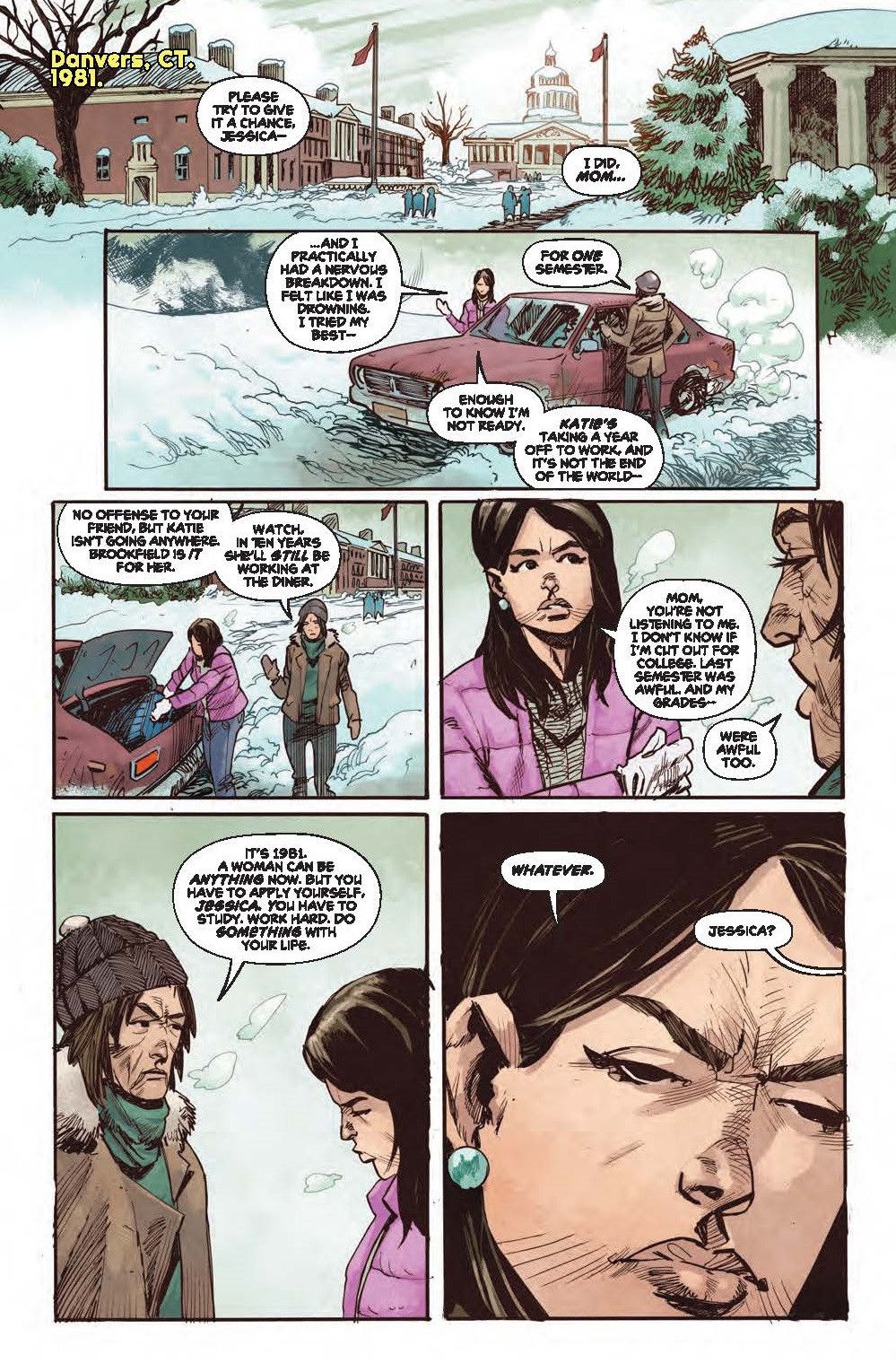
The Conjuring: The Lover is a perfect fit to kick off the new DC Horror imprint. How did the stars align to bring The Conjuring cinematic universe into the DC comic book world?
Katie Kubert: As I mentioned before, I am a huge horror nerd. When Michael said you were from Fangoria, I'm like, "Oh my God, I've been reading Fangoria since I was a kid. I love it." I'm a huge horror person and, as an editor at DC, I've been trying to figure out ways to elevate that genre in its own specific way. Joe Hill and the Joe Hill line has been doing some amazing work with horror over; Black Label, with Chris Conroy and his group, have been developing some amazing stuff. The Nice House on the Lake is such a good book.
DC has so many amazing horror titles coming out, and when you look at Warner Media, we also are a partner with New Line. They're the horror gods to me. So, I'm like, "Would it be possible to create a partnership with this production company?" It's the house that Freddy built, and it's synonymous with horror to any horror fan. How could we work together as a partnership to create something new and something familiar, and something easy for fans to pick up? Maybe some Conjuring fans have never read a comic book in their life, but they love the universe; they love the mystery; they love the world that has been built there. So what can we as comic creators make for them that they can just pick up and enjoy and want to binge and read more of?
That's kind of how that partnership was created. It's that creepy opening door from House of Secrets or House of Mystery. What is that door that's open that all horror fans know has something really weird and gross and terrifying inside? "I want to walk through and read it, even though I've never done anything like this before." That's what I was hoping to create by doing something with a Conjuring title, because that's a familiar thing for horror fans while maybe comics aren't. So, um, so yeah.
As horror fans and storytellers, what do you find makes college students and high schoolers such common protagonists of the genre?
David Johnson-McGoldrick: I think it's something to do with what we touched on a bit earlier, in terms of horror connecting to universal anxieties; things that we've all experienced, and places we've all been uncomfortable. For me, the most resonant horror is the one that represents something else to the character.
The Exorcist is my all-time favorite horror movie, but at the end of the day, the horror of The Exorcist is, "There's something wrong with my daughter. She's sick, I don't know what to do, and nobody can help me." That's what the real horror of is. The Babadook is, "I'm a single mom, and I'm overwhelmed. This is how this darkness is manifesting itself."
If Rex and I are any indication, college is a very stressful time. You're going some place new, and you're exploring the world. And it can be scary. High school too. I feel like those are both very common settings, because they're common experiences that we've had anxiety about, and we were all on some level fearful of it. So, having that horror manifest there seems very natural, I think.
Rex Ogle: All of us go through high school, and it's not always the easiest. You've got hormones, just blasting through your body, and you've got all these voices in your head. You're trying to be cool, you're trying to get the girl, you're trying to fit in - and it's hard. College magnifies that, for those who go to college. It can be a struggle, and it's not easy for everyone. I think that everyone can relate to that, and by giving those scary things a physical form even more so.
Katie Kubert: I also think something that makes college students and high schoolers such common centerpieces for horror in general is innocence. Because these characters are experiencing things for the first time and are completely new to life, and they have that aura of innocence. So, it makes them easy to connect with as a reader or as a viewer. That seems to be an easy way to get into something that you're reading, because you can identify with them and that level of innocence, knowing that they've not experienced any of the things that are to come.
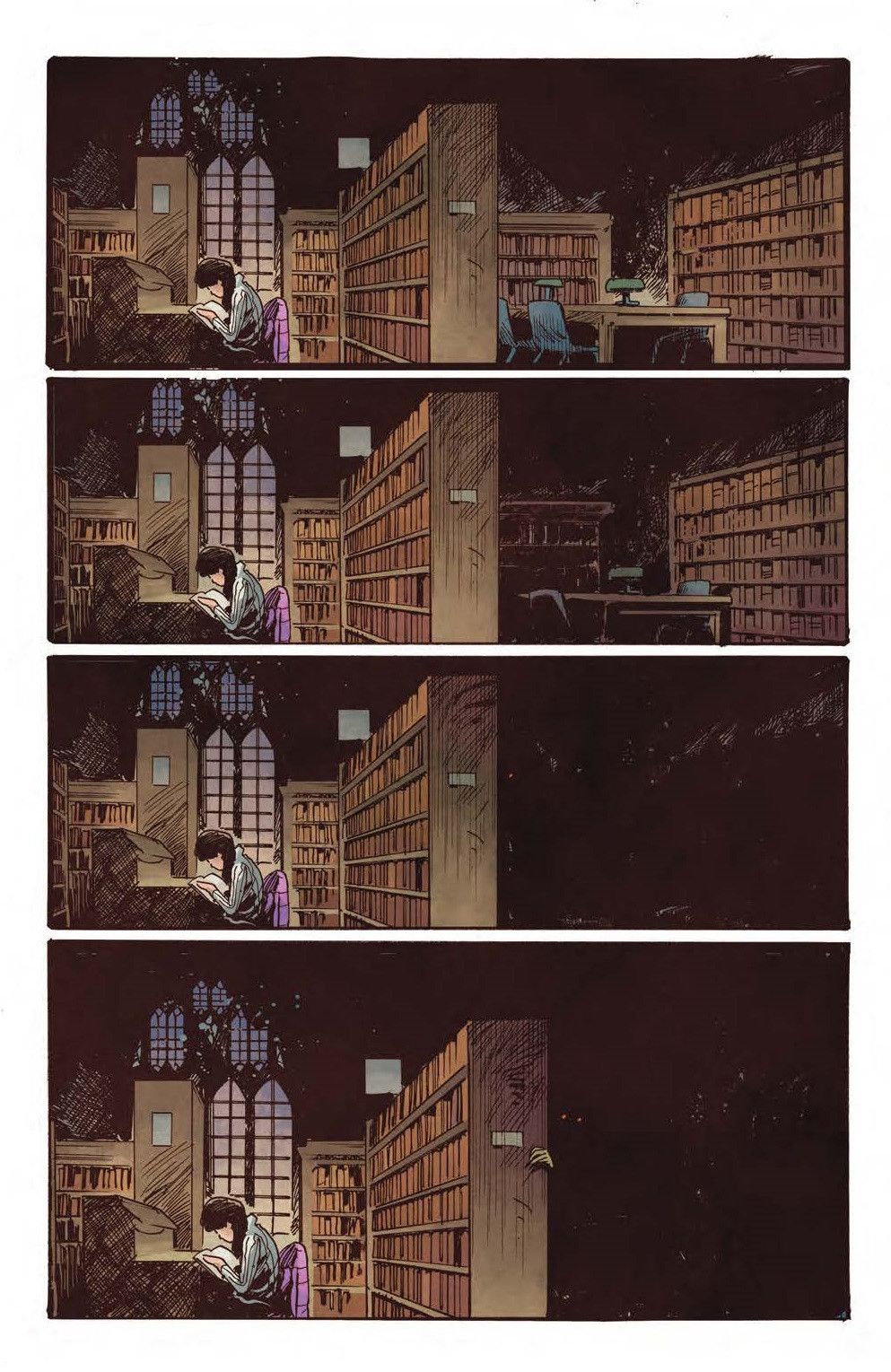
Does this series open up the possibility of exploring other artifacts that haven't been featured in the cinematic universe?
Katie Kubert: You'll have to read and see! I know you're gonna probably kill me, but... [laughs].
How much creative freedom did you have while working on The Lover and adding this story to The Conjuring universe? Do you spend a lot of time studying the previous movies, or were you given a lot of freedom to create your own unique story that fits into this universe?
Rex Ogle: I felt like New Line gave us a ton of freedom. But the great thing was that David wrote this amazing script that had this C plot that we were able to pull out and make almost a prequel to Conjuring 3. For me, going back and rewatching The Conjuring movies was just a total blast. In a way, it's like the homework that I had to do was something I wanted to do anyway.
Katie Kubert: I did the same thing. I was like, "I'm just gonna watch all of them in order, and then I will be the master. And then as a creator, when you're watching those things, Rex and I were talking about how, "We could do this, or we could do this. We could pull this thread." Because none of those those films are complete sets; every single storyline does not have a stop and start. That just gives this total area for development and for story, which is why I was like, "Rex and David, go! There's all these things you could do." It's exciting to work in, as opposed to like, "We've got to stay in these borders that were created." It's not like that at all.
David Johnson-McGoldrick: The freedom's been a lot of fun too, because for me, what was most exciting going into it was that old horror comic grab bag feeling of it. And when you have a universe that's been around for almost 10 years now and has such a rich world, it's fun to see, "What does everyone else think?" Other people out there are gonna have ideas to contribute to it. I've purposely not read any of the backup stories, because I want to be surprised by them. The whole idea was to just be like, "Here's this giant, fun horror sandbox. What is everybody gonna come up with?"
Katie Kubert: That's the fun with approaching different creators and different talent for the Tales From the Artifact Room; we've actually gone to different teams for each one. And it's one of those things where we had a few items that you see in the room, so what kind of stories inspire you for which one? As I would go to these different writers and artists, we would basically just take those ideas and run them through New Line and run them by James Wan. We'd be like, "Hey, this doesn't mess with anything that you guys are developing or any future plans, right? It's more additive to what you want to bring to the world." And they're like, "Yeah, go ahead."
It's really been a fun way to expand on things that both Conjuring fans are like, "Oh, I know that! I've seen that in the back of the room. There's this hidden thing that's all the way back there, I didn't see it," but also really giving people a new story that we've had room to develop. Because we were able to do that with Conjuring talent and with James Wan and their team, it's all just aligned really well. And I'm just like, "Yay, I didn't screw it up! That was my whole goal.
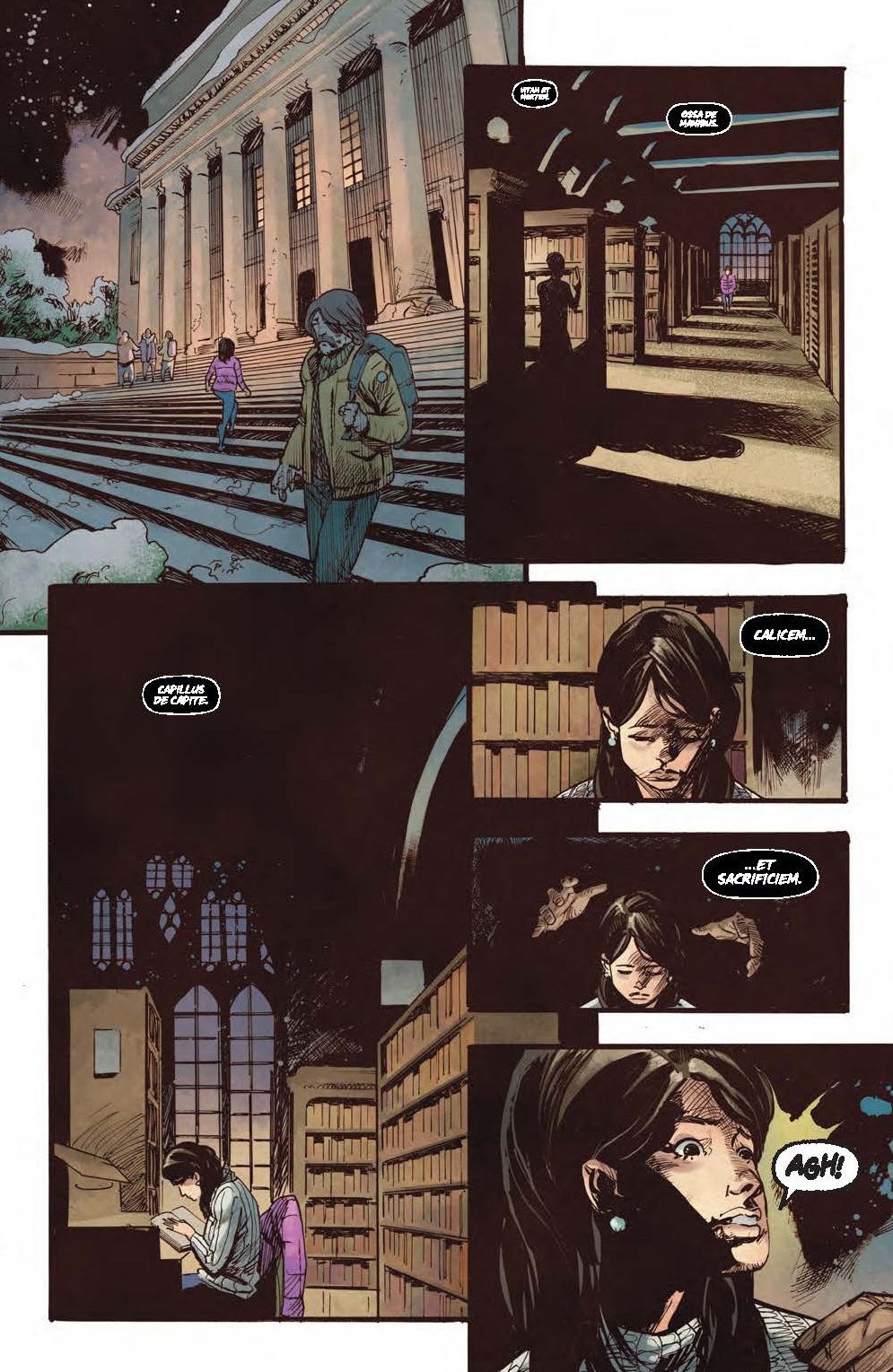
David, how has it been writing for the comic book medium and working with Rex, Katie and Gary in this format versus television or film?
David Johnson-McGoldrick: It's been really exciting, and it goes back to a little bit what I was saying before. I've never done this before - I have read a few comic book scripts before this, but I was mainly a comic book fan. For me, it's just been the learning experience of it. I defer to these guys a lot, because I'm there to learn how these things work.
I had tinkered around with a comic a little while back, and the first thing I learned is that they are different formats, and you have different rules for them. There are things that make sense for a reveal in film, but that reveal might come a little bit later than it comes in the comic. There's ways the eyes move across the page, and places that things need to fall in a comic, that are different from how you would structure a film.
So to me, it's just been, "Here, I have a bunch of ideas," and then these guys have really turned them into an actual thing, as opposed to just a pile of ideas that wouldn't work. Working with Rex has been like, "Here's an idea for Jessica, she could be at college and this is what happens," and then we sort of shape it together. He sort of takes the lead on that, and it's been great watching him work so I can hopefully do one of these on my own one of these days.
The comic takes place in 1981, right in the middle of an amazing era for horror films. Were you influenced or inspired by any other horror films of that era while creating The Lover?
David Johnson-McGoldrick: That's interesting. It's funny because, for me, the era is part of what inspired the format as opposed to necessarily the story - in that sort of, "What would this comic book have looked like in 1981?" It would have had ads, and it might have had multiple stories, and things like that. For me, the period was more like, picking up this comic book is taking you back to this time.
Katie also [mentioned] the variant covers. I think the period has lent itself to that; the horror inspiration is more in the tactile experience of it, and in that VHS covers and that old illicit corner where all the horrible horror movies were in the video store. It's eliciting that quality for me. I think the DNA is very much The Conjuring, but also drawing from other stuff to.
Rex Ogle: I grew up in the early 80s, and I loved going to the video store, but also just catching these creepy movies that would come on USA in the middle of the night. I was also really into Friday the 13th the television series, which is very akin to the Artifact Room. So, I definitely like drew on those old Stephen King movies that I grew up on, like Pet Sematary. That early 80s, very creepy vibe was something that I wanted to instill in the story.
Katie Kubert: Yeah, I was getting a lot of the original Black Christmas as well. Something creepy and weird is happening on a college campus, and you've got someone who has a secret that they're hiding. So, as I was reading the story from David and Rex, I was like, "Oh, this is very Black Christmas," which is right around that time period.
But the fun thing about this is - even though it takes place in the 80s, and there's a lot of inspiration towards the the tone and the feel - it's almost like you've got inspiration for a bunch of things. Just like David was saying, the Conjuring films themselves draw on a bunch of different tropes and feelings. So, I think they did a great job of pushing that all into one tasty little five issue series.
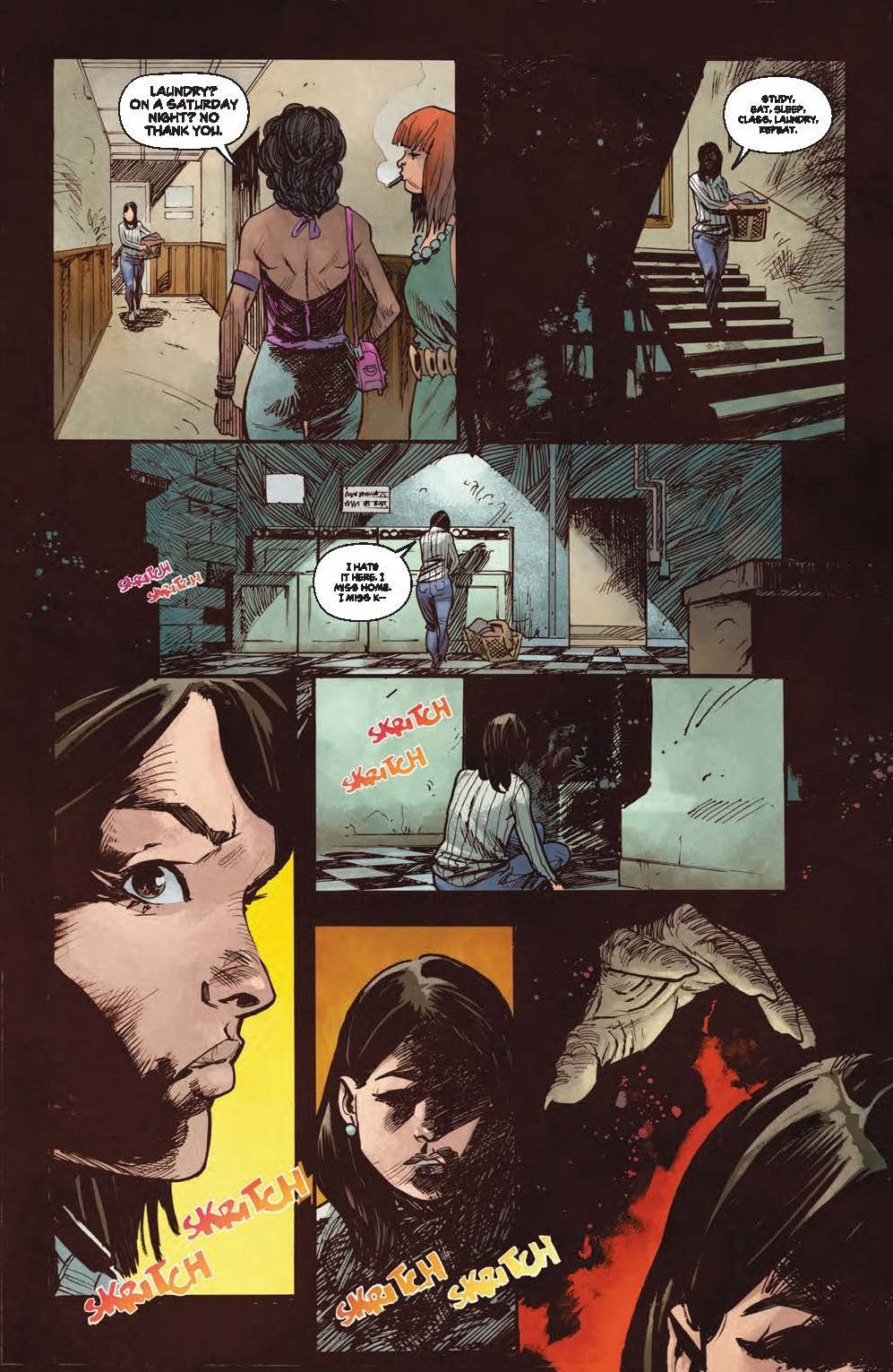
When you were plotting the series out, what made five issues the right number?
David Johnson-McGoldrick: We had sort of a little story. It matched the puzzle piece that we had in the movie. I think Jessica's story, that already existed, was a brief little snippet. It was a story of a possession, and it's a story of what happens when you don't meet the Warrens. That story ends when you don't meet the Warrens.
Katie Kubert: That's exactly right. With a lot of other mini-series or ongoing comics, it's a lot about crafting your a story, but then also your B and C sub-threads and your other plotlines. But because when you watch The Conjuring movie, you will know what happens to Jessica, this is something where we wanted to add to her story but not over-tell it. It's this little snippet, and we're like, "Here's something that we can highlight that would be super fun for fans to read."
But it's not really our place to build B and C plot lines, because we really wanted the focus to be on Jessica and what she was going through, as well as being able to add with the details from the Artifact Room and build enough creepiness with the ads or with other Easter eggs that we're laying through. So, that's how we decided to do that instead.
Rex Ogle: I think there's also something to the EC style that we were trying to evoke, which is like: you're dropped in, you're presented with a problem, and it's solved 5 pages later. It's not a soap opera, you're not going off in different directions. It's proposing a scary and dramatic situation, and then it's resolving it. I felt that was more in keeping with what we wanted to do to just stay on target.
The Conjuring: The Lover #1 is available now wherever comic books are sold physically and digitally. The Conjuring: The Devil Made Me Do It will release in theaters and on HBO Max on June 4, 2021.
from ScreenRant - Feed https://ift.tt/3uI7zOg

No comments: